Fan Ding
Drive As You Like: Strategy-Level Motion Planning Based on A Multi-Head Diffusion Model
Aug 23, 2025Abstract:Recent advances in motion planning for autonomous driving have led to models capable of generating high-quality trajectories. However, most existing planners tend to fix their policy after supervised training, leading to consistent but rigid driving behaviors. This limits their ability to reflect human preferences or adapt to dynamic, instruction-driven demands. In this work, we propose a diffusion-based multi-head trajectory planner(M-diffusion planner). During the early training stage, all output heads share weights to learn to generate high-quality trajectories. Leveraging the probabilistic nature of diffusion models, we then apply Group Relative Policy Optimization (GRPO) to fine-tune the pre-trained model for diverse policy-specific behaviors. At inference time, we incorporate a large language model (LLM) to guide strategy selection, enabling dynamic, instruction-aware planning without switching models. Closed-loop simulation demonstrates that our post-trained planner retains strong planning capability while achieving state-of-the-art (SOTA) performance on the nuPlan val14 benchmark. Open-loop results further show that the generated trajectories exhibit clear diversity, effectively satisfying multi-modal driving behavior requirements. The code and related experiments will be released upon acceptance of the paper.
SenseRAG: Constructing Environmental Knowledge Bases with Proactive Querying for LLM-Based Autonomous Driving
Jan 08, 2025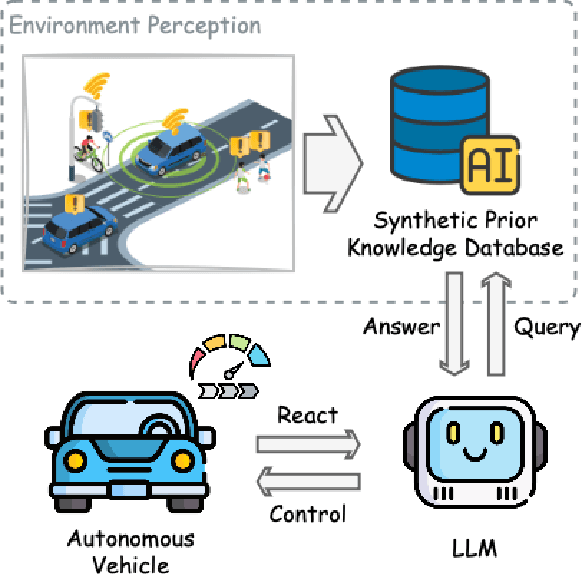
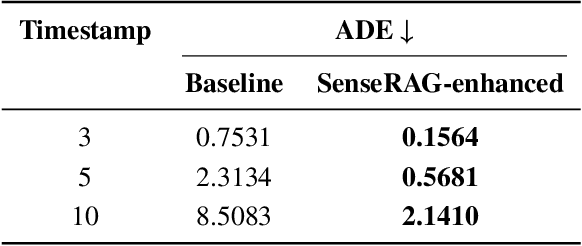
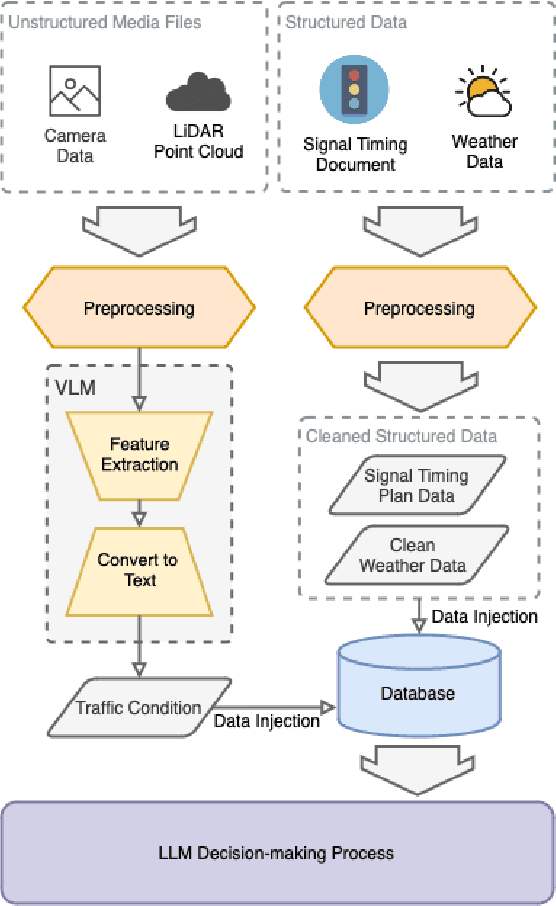
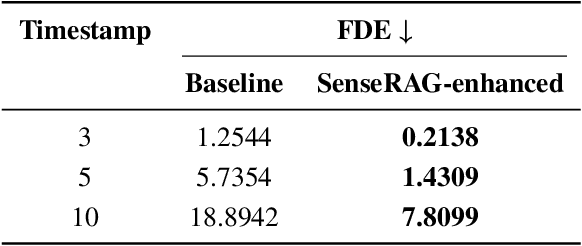
Abstract:This study addresses the critical need for enhanced situational awareness in autonomous driving (AD) by leveraging the contextual reasoning capabilities of large language models (LLMs). Unlike traditional perception systems that rely on rigid, label-based annotations, it integrates real-time, multimodal sensor data into a unified, LLMs-readable knowledge base, enabling LLMs to dynamically understand and respond to complex driving environments. To overcome the inherent latency and modality limitations of LLMs, a proactive Retrieval-Augmented Generation (RAG) is designed for AD, combined with a chain-of-thought prompting mechanism, ensuring rapid and context-rich understanding. Experimental results using real-world Vehicle-to-everything (V2X) datasets demonstrate significant improvements in perception and prediction performance, highlighting the potential of this framework to enhance safety, adaptability, and decision-making in next-generation AD systems.
ST-HCSS: Deep Spatio-Temporal Hypergraph Convolutional Neural Network for Soft Sensing
Jan 02, 2025Abstract:Higher-order sensor networks are more accurate in characterizing the nonlinear dynamics of sensory time-series data in modern industrial settings by allowing multi-node connections beyond simple pairwise graph edges. In light of this, we propose a deep spatio-temporal hypergraph convolutional neural network for soft sensing (ST-HCSS). In particular, our proposed framework is able to construct and leverage a higher-order graph (hypergraph) to model the complex multi-interactions between sensor nodes in the absence of prior structural knowledge. To capture rich spatio-temporal relationships underlying sensor data, our proposed ST-HCSS incorporates stacked gated temporal and hypergraph convolution layers to effectively aggregate and update hypergraph information across time and nodes. Our results validate the superiority of ST-HCSS compared to existing state-of-the-art soft sensors, and demonstrates that the learned hypergraph feature representations aligns well with the sensor data correlations. The code is available at https://github.com/htew0001/ST-HCSS.git
KANS: Knowledge Discovery Graph Attention Network for Soft Sensing in Multivariate Industrial Processes
Jan 02, 2025



Abstract:Soft sensing of hard-to-measure variables is often crucial in industrial processes. Current practices rely heavily on conventional modeling techniques that show success in improving accuracy. However, they overlook the non-linear nature, dynamics characteristics, and non-Euclidean dependencies between complex process variables. To tackle these challenges, we present a framework known as a Knowledge discovery graph Attention Network for effective Soft sensing (KANS). Unlike the existing deep learning soft sensor models, KANS can discover the intrinsic correlations and irregular relationships between the multivariate industrial processes without a predefined topology. First, an unsupervised graph structure learning method is introduced, incorporating the cosine similarity between different sensor embedding to capture the correlations between sensors. Next, we present a graph attention-based representation learning that can compute the multivariate data parallelly to enhance the model in learning complex sensor nodes and edges. To fully explore KANS, knowledge discovery analysis has also been conducted to demonstrate the interpretability of the model. Experimental results demonstrate that KANS significantly outperforms all the baselines and state-of-the-art methods in soft sensing performance. Furthermore, the analysis shows that KANS can find sensors closely related to different process variables without domain knowledge, significantly improving soft sensing accuracy.
PKRD-CoT: A Unified Chain-of-thought Prompting for Multi-Modal Large Language Models in Autonomous Driving
Dec 02, 2024
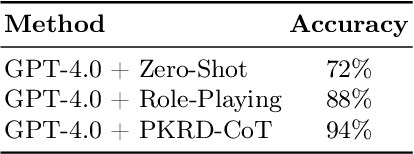
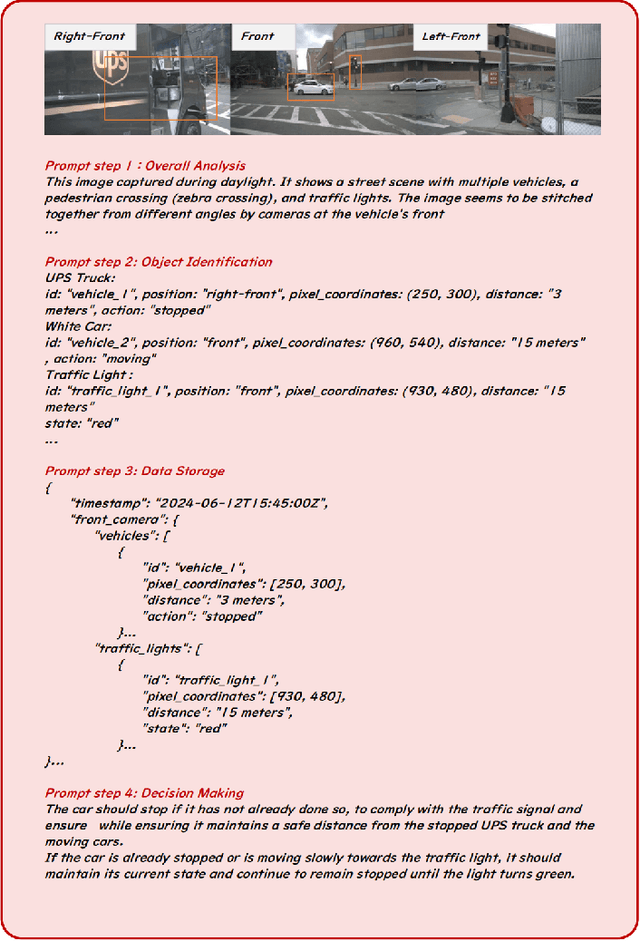

Abstract:There is growing interest in leveraging the capabilities of robust Multi-Modal Large Language Models (MLLMs) directly within autonomous driving contexts. However, the high costs and complexity of designing and training end-to-end autonomous driving models make them challenging for many enterprises and research entities. To address this, our study explores a seamless integration of MLLMs into autonomous driving systems by proposing a Zero-Shot Chain-of-Thought (Zero-Shot-CoT) prompt design named PKRD-CoT. PKRD-CoT is based on the four fundamental capabilities of autonomous driving: perception, knowledge, reasoning, and decision-making. This makes it particularly suitable for understanding and responding to dynamic driving environments by mimicking human thought processes step by step, thus enhancing decision-making in real-time scenarios. Our design enables MLLMs to tackle problems without prior experience, thereby increasing their utility within unstructured autonomous driving environments. In experiments, we demonstrate the exceptional performance of GPT-4.0 with PKRD-CoT across autonomous driving tasks, highlighting its effectiveness in autonomous driving scenarios. Additionally, our benchmark analysis reveals the promising viability of PKRD-CoT for other MLLMs, such as Claude, LLava1.6, and Qwen-VL-Plus. Overall, this study contributes a novel and unified prompt-design framework for GPT-4.0 and other MLLMs in autonomous driving, while also rigorously evaluating the efficacy of these widely recognized MLLMs in the autonomous driving domain through comprehensive comparisons.
Cross-Domain Transfer Learning using Attention Latent Features for Multi-Agent Trajectory Prediction
Nov 12, 2024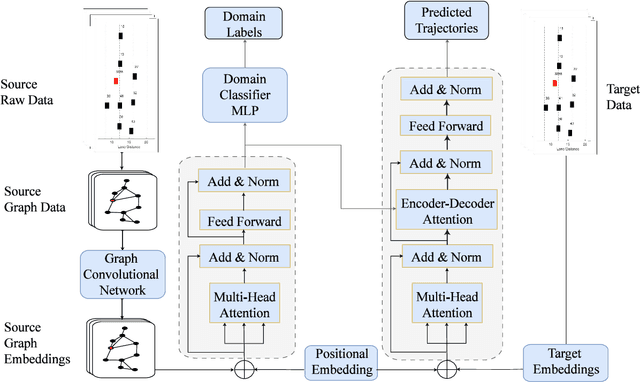
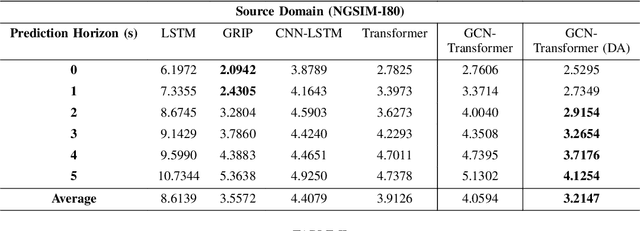

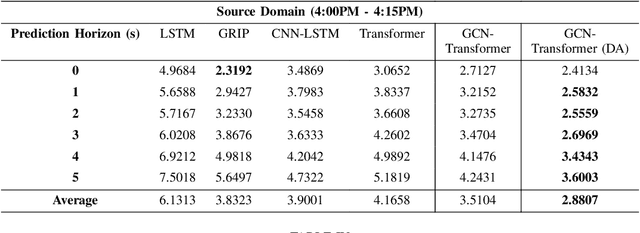
Abstract:With the advancements of sensor hardware, traffic infrastructure and deep learning architectures, trajectory prediction of vehicles has established a solid foundation in intelligent transportation systems. However, existing solutions are often tailored to specific traffic networks at particular time periods. Consequently, deep learning models trained on one network may struggle to generalize effectively to unseen networks. To address this, we proposed a novel spatial-temporal trajectory prediction framework that performs cross-domain adaption on the attention representation of a Transformer-based model. A graph convolutional network is also integrated to construct dynamic graph feature embeddings that accurately model the complex spatial-temporal interactions between the multi-agent vehicles across multiple traffic domains. The proposed framework is validated on two case studies involving the cross-city and cross-period settings. Experimental results show that our proposed framework achieves superior trajectory prediction and domain adaptation performances over the state-of-the-art models.
Energy-efficient Hybrid Model Predictive Trajectory Planning for Autonomous Electric Vehicles
Nov 09, 2024Abstract:To tackle the twin challenges of limited battery life and lengthy charging durations in electric vehicles (EVs), this paper introduces an Energy-efficient Hybrid Model Predictive Planner (EHMPP), which employs an energy-saving optimization strategy. EHMPP focuses on refining the design of the motion planner to be seamlessly integrated with the existing automatic driving algorithms, without additional hardware. It has been validated through simulation experiments on the Prescan, CarSim, and Matlab platforms, demonstrating that it can increase passive recovery energy by 11.74\% and effectively track motor speed and acceleration at optimal power. To sum up, EHMPP not only aids in trajectory planning but also significantly boosts energy efficiency in autonomous EVs.
Configuration-Aware Safe Control for Mobile Robotic Arm with Control Barrier Functions
Apr 18, 2022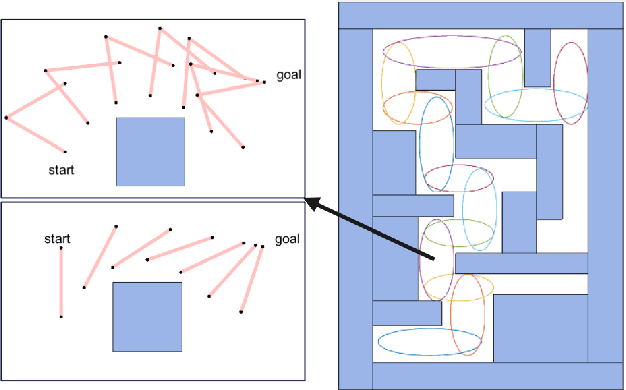
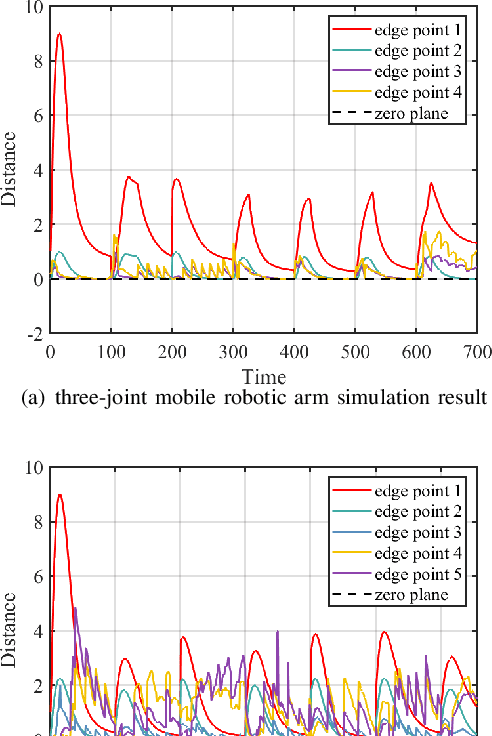
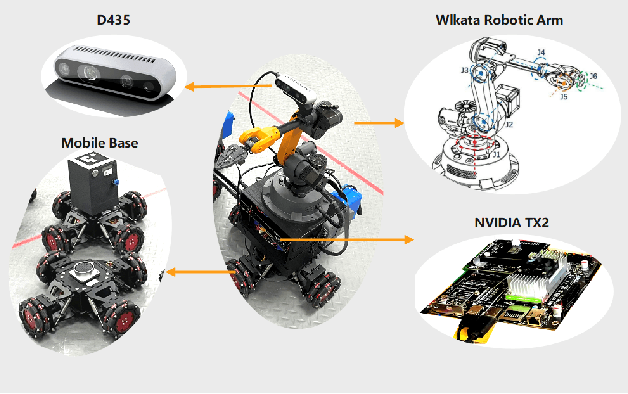
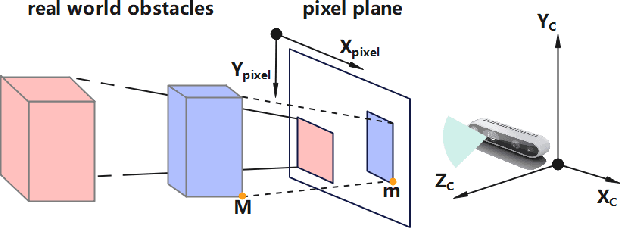
Abstract:Collision avoidance is a widely investigated topic in robotic applications. When applying collision avoidance techniques to a mobile robot, how to deal with the spatial structure of the robot still remains a challenge. In this paper, we design a configuration-aware safe control law by solving a Quadratic Programming (QP) with designed Control Barrier Functions (CBFs) constraints, which can safely navigate a mobile robotic arm to a desired region while avoiding collision with environmental obstacles. The advantage of our approach is that it correctly and in an elegant way incorporates the spatial structure of the mobile robotic arm. This is achieved by merging geometric restrictions among mobile robotic arm links into CBFs constraints. Simulations on a rigid rod and the modeled mobile robotic arm are performed to verify the feasibility and time-efficiency of proposed method. Numerical results about the time consuming for different degrees of freedom illustrate that our method scales well with dimension.
X-MEN: Guaranteed XOR-Maximum Entropy Constrained Inverse Reinforcement Learning
Mar 22, 2022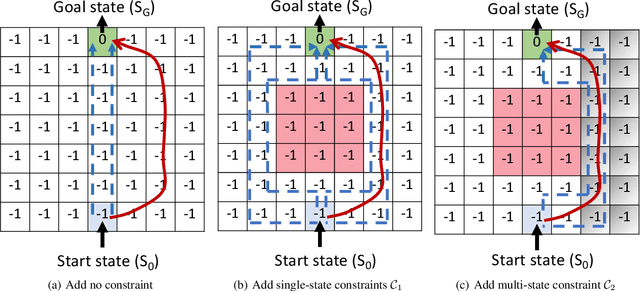
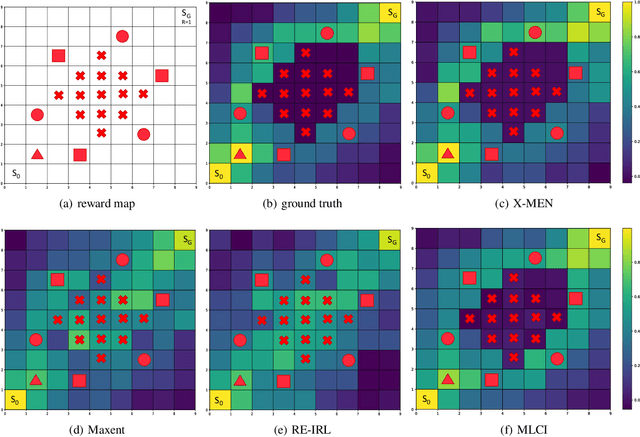

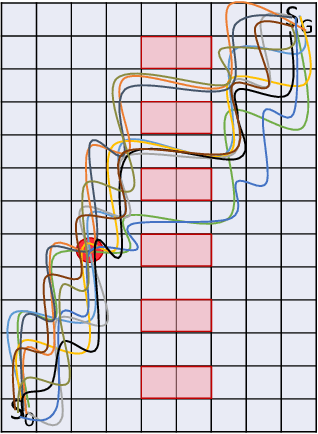
Abstract:Inverse Reinforcement Learning (IRL) is a powerful way of learning from demonstrations. In this paper, we address IRL problems with the availability of prior knowledge that optimal policies will never violate certain constraints. Conventional approaches ignoring these constraints need many demonstrations to converge. We propose XOR-Maximum Entropy Constrained Inverse Reinforcement Learning (X-MEN), which is guaranteed to converge to the optimal policy in linear rate w.r.t. the number of learning iterations. X-MEN embeds XOR-sampling -- a provable sampling approach that transforms the #P complete sampling problem into queries to NP oracles -- into the framework of maximum entropy IRL. X-MEN also guarantees the learned policy will never generate trajectories that violate constraints. Empirical results in navigation demonstrate that X-MEN converges faster to the optimal policies compared to baseline approaches and always generates trajectories that satisfy multi-state combinatorial constraints.
Provable Constrained Stochastic Convex Optimization with XOR-Projected Gradient Descent
Mar 22, 2022
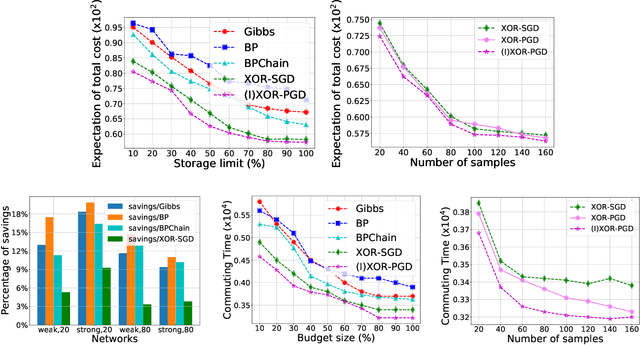

Abstract:Provably solving stochastic convex optimization problems with constraints is essential for various problems in science, business, and statistics. Recently proposed XOR-Stochastic Gradient Descent (XOR-SGD) provides a convergence rate guarantee solving the constraints-free version of the problem by leveraging XOR-Sampling. However, the task becomes more difficult when additional equality and inequality constraints are needed to be satisfied. Here we propose XOR-PGD, a novel algorithm based on Projected Gradient Descent (PGD) coupled with the XOR sampler, which is guaranteed to solve the constrained stochastic convex optimization problem still in linear convergence rate by choosing proper step size. We show on both synthetic stochastic inventory management and real-world road network design problems that the rate of constraints satisfaction of the solutions optimized by XOR-PGD is $10\%$ more than the competing approaches in a very large searching space. The improved XOR-PGD algorithm is demonstrated to be more accurate and efficient than both XOR-SGD and SGD coupled with MCMC based samplers. It is also shown to be more scalable with respect to the number of samples and processor cores via experiments with large dimensions.
 Add to Chrome
Add to Chrome Add to Firefox
Add to Firefox Add to Edge
Add to Edge